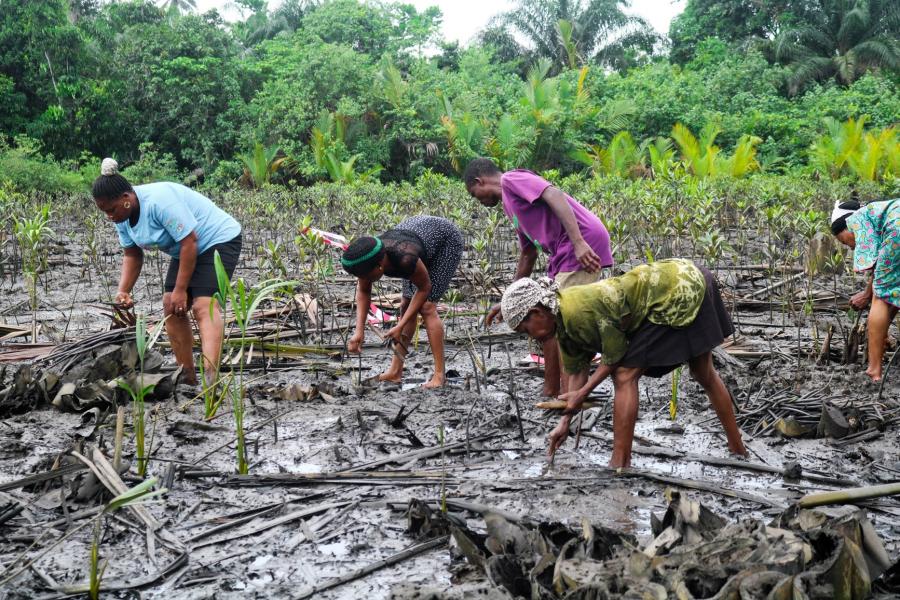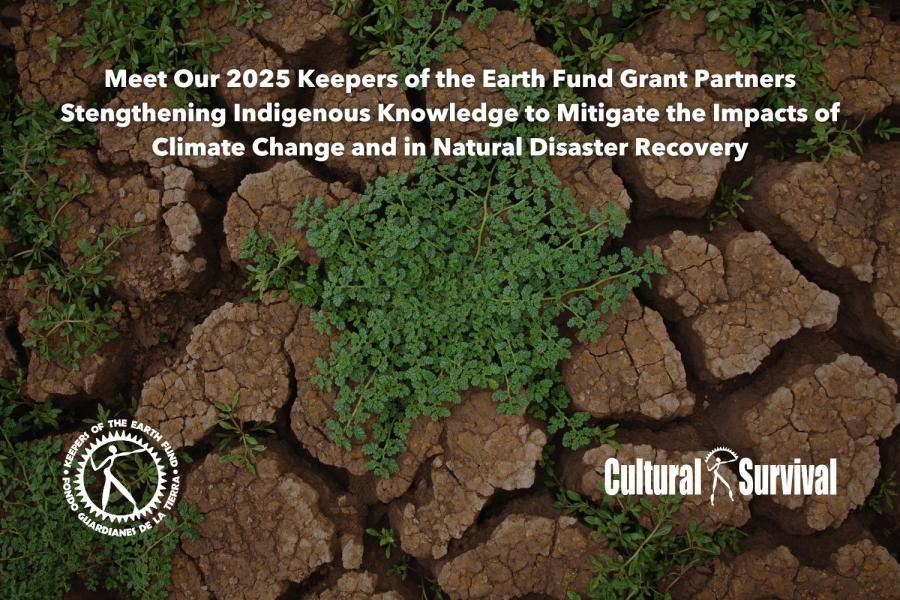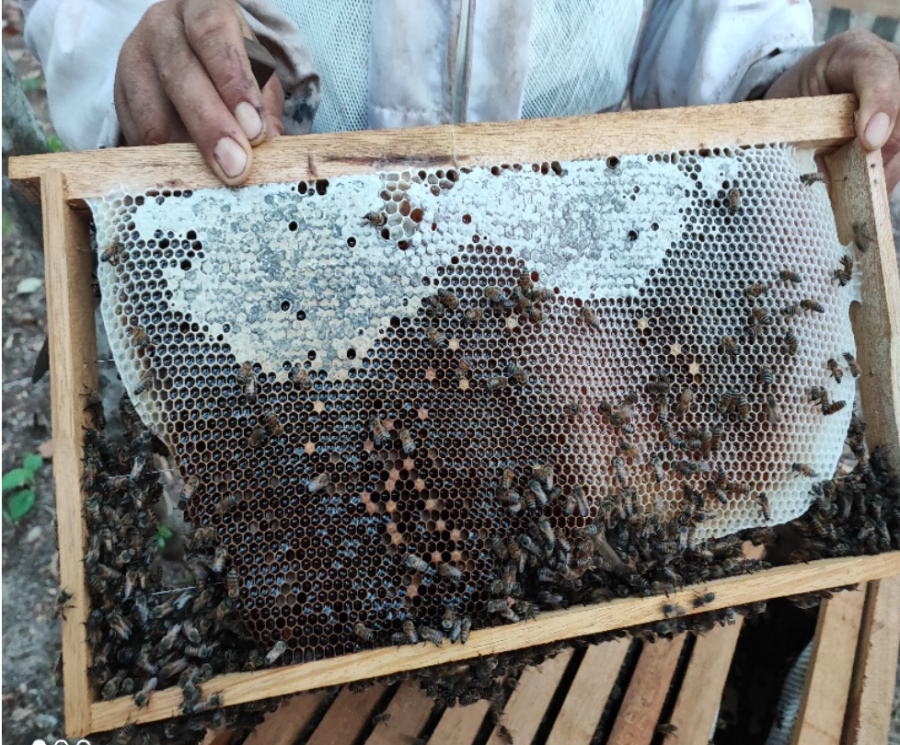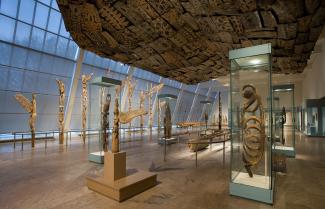
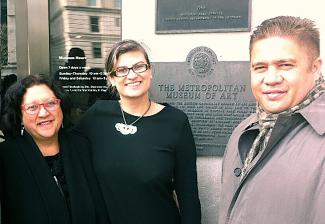
There is a long, uneasy history between Indigenous Peoples and museums fraught with complexity. Controversies abound concerning misappropriated artifacts, collection of human remains, the lack of accurate contemporary representations, as well as the scarcity of Indigenous voices within institutional leadership. But change is on the horizon. The Metropolitan Museum of Art has appointed Maia Nuku (Māori, iwi Ngai Tai) as the Associate Curator of Oceanic Art, the first Indigenous Pacific person ever in a curatorial position there. She spoke with Cultural Survival about her background, interests, and expectations for this exciting new role.
Cristina Verán: Please share with us a bit of your family history and what is was
like to grow up within London’s small, but noteworthy Maori community.
Maia Nuku: My mother Esther Kerr (Ngai Tai) came from Torere, in the Bay of Plenty region of Aotearoa/New Zealand. In 1958 she sailed on a ship called the Rangitoto to London, where she met and married my English father, Jeff Jessop. The small London Māori community would meet regularly at a flat re-christened ‘Putney Pā’ (village) to share news, socialize, and sing songs together; informal beginnings of the cultural group now known as Ngati Ranana (Tribe of London.) They’ve hosted many visiting Māori delegations over the years from artists to bishops, politicians, war veterans, even opera sing- ers, and today meet at the New Zealand High Commission. That building, with its impressive pou ihi sculpture by artist Inia Te Wiata in the foyer, is steeped in the wairua (spirit) of all those who’ve passed through its doors. Growing up
I spent a lot of time there in cultural practices and listening to whaikorero (oratory), and so Ngati Ranana helped ensure that, despite being this London kid, Māori culture was always familiar to me.
How did you connect with Aotearoa, being Maori
yet so raised far away from it?
Well, we visited as much as possible; especially Torere, where we visited Nana (Hera Mio) and went on hikoi with our uncle through the bush, learning about the native plants and their healing properties. Our whanau’s beautiful whenua (family land) hugs the East Coast, looking directly at volcanic Whakaari Island offshore. It is truly home for me and I’m tied to it.
How did your Oceania-focused career path take shape, half a world away from the pacific?
My BA was in Modern Languages (Spanish/French) and, in- spired by the poetry of Pablo Neruda, I spent a year studying in Chile. I delighted in this nation of artists who embraced their landscape, their environment, and the complexity of Chile’s history—including its relationship with the Pacific. Through a course on the art of Rapa Nui (Easter Island; part of Chile’s Valparaiso state) I learned about its checkered colonial past, becoming more aware of such disjunctures of history. Then, upon returning to the UK and wanting to work with art
in some capacity, I got a job as a broker at Lloyd’s of London insuring fine art, museums, and travelling exhibitions.
Tell us about an exhibition or other relevant experiences that made strong impressions on you early on.
In 1998, Māori opened at the British Museum, for which Dame Te Atairangikaahu, the Māori Queen, was present. In her delegation was distinguished orator and artist Selwyn Muru, who addressed the audience with some whaikorero (formal speeches) I found very inspiring. He had an impres- sive breadth of knowledge and interest in European art, life, and culture as well. One day he, myself, and another Māori artist named Brett Graham took a daytrip to Paris visiting the Louvre and Musée Zadkine. I found it so refreshing, seeing European art through their Māori eyes.
What about art from the pacific region?
Elizabeth Ellis organized a photo exhibition called Moko: 19th Century Portrait Photographs of Māori, featuring large black and white portrait images taken back in the 1870s by photographer Samuel Carnell. The women in each photo- graph from the Ngati Kahungunu iwi (tribe) totally inhabited the frame in black taffeta and moiré-silk Victorian style bustle dresses, offset by the dark ink of their moko kauae (tattooed chin markings), dramatic white-tipped huia feathers in their hair, and greenstone hei tiki around their necks. Beautiful, so bold and confident; their eyes met mine.
Was it the aesthetic qualities or something more
that drew your interest?
I was fascinated by the clash of cultures; an encounter between history and art, fixed in a single photographic moment while hinting at otherwise untold stories behind them. I had always been drawn to old photos, but these affected me differently, more personally, than any before.
What made you shift from being an audience member to actively engaging with art in your professional life?
Approaching the millennium, I followed my heart and headed back to Aotearoa to live on our whenua for a while. It was there that I finally began to inhabit myself.
I yearned to do something that would really speak to my passions, and returning to the UK, did two arts-focused Master’s degrees followed by some hands on experience around art collections—notably, with Steven Hooper and the Polynesian Visual Arts project at Sainsbury called Pacific Encounters: Art and Divinity in Polynesia 1760-1860. This was followed by two Cambridge post-docs, with the Artefacts of Encounter 1765-1840 and Pacific Presences: Oceanic Art in European Museums projects.
In 1984,the met hosted a groundbreaking exhibition called Te Maori. How would you reflect on its legacy there, today?
It was indeed historic. For the opening, hundreds of Māori people gathered on the museum’s front steps and, as they en- tered its grand halls, led the audience through formal Māori protocols of ceremony. It really began to change the landscape of museums in terms of possibilities, which my work will surely build upon.
At the museum, what challenges do you see your work being able to address with regard to its oceanic collections?
A key challenge, given the encyclopedic scope of The Met’s collections, will be to raise the profile within the museum for Pacific art overall, which remains relatively obscure within the New York art scene to this day. Fortunately, as Associate Curator for Oceanic Art I oversee [the establishing] of public displays, curating exhibitions, researching and writing about the collection, hosting artist visits, and also engaging different publics within educational programs.
Will your efforts focus primarily on visual arts?
I’m actually very interested in theater, dance, really any
type of performance, and will look to involve such artists in
a variety of ways; through digital media, for example. I want to convey a range of voices and soundscapes within our collection without necessarily disturbing the current displays.
Who is a visual and/or performance artist you would be especially keen to work with?
Lemi Ponifasio, the renowned Samoan dancer and choreogra- pher who founded and directs the Mau Dance Company of New Zealand, is one. Throughout his body of work, Ponifasio reminds that our traditions don’t belong to only a single mo- ment of history; they must negotiate with modern life. Last November I saw Mau’s Birds with Sky-Mirrors at the Brooklyn Academy of Music, and it was nothing short of exhilarating, pushing boundaries while managing to bring that traditional past hurtling into the present.
Arts patron leonard lauder’s recent $1 billion gift to the met has spearheaded a move to increase its focus on contemporary art well beyond the classic works for which it is perhaps best known. might this bring new opportunities for Maori and other indigenous pacific artists?
The Met is indeed exploring the legacies of Modern and Contemporary art within the contexts of its global collections, more and more. Just prior to my appointment I worked on Multiple Modernisms: Twentieth-Century Artistic Modernisms in Global Perspective at Cambridge, which aims to reconfigure the accepted narrative of Modernism to include concurrent narratives—including of the Pacific—long relegated to its periphery. I definitely look forward to introducing lots of exciting contemporary Oceanic art to our audiences.
—Cristina Verán is an international Indigenous Peoples’ issues specialist, research consultant, communications strategist, and multimedia producer.
Photo courtesy of the Metropolitan Museum of Art
